Related Research Articles
Richard Kenneth Dell was a New Zealand malacologist.

HMS Challenger was a Pearl-class corvette of the Royal Navy launched on 13 February 1858 at the Woolwich Dockyard. She served the flagship of the Australia Station between 1866 and 1870.
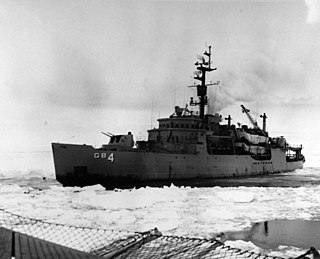
USS Glacier (AGB-4) was a U.S. Navy, then U.S. Coast Guard icebreaker which served in the first through fifteenth Operation Deep Freeze expeditions. Glacier was the first icebreaker to make her way through the frozen Bellingshausen Sea, and most of the topography in the area is named for her crew members. When built, Glacier had the largest capacity single armature DC motors ever installed on a ship. Glacier was capable of breaking ice up to 20 feet (6.1 m) thick, and of continuous breaking of 4-foot (1.2 m) thick ice at 3 knots.

USCGC Northwind (WAG/WAGB-282) was a Wind-class icebreaker, the second United States Coast Guard Cutter of her class to bear the name. She was built to replace USCGC Staten Island which was in Soviet lend-lease service.

Walter Reginald Brook Oliver was a New Zealand naturalist, ornithologist, malacologist, and museum curator.
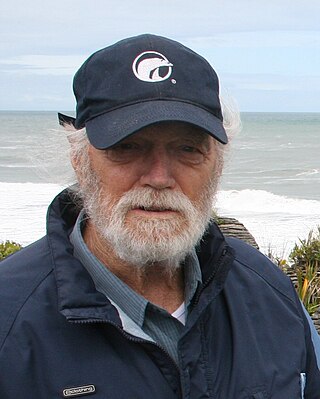
David McNiven Garner was notable as a published research physicist, with a focus in physical oceanography and ocean circulation.
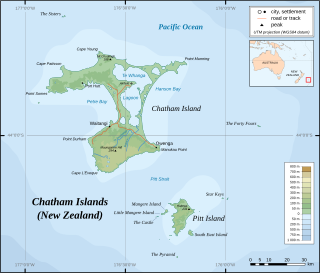
Hokorereoro, Rangatira, or South East Island is the third largest island in the Chatham Islands archipelago, and covers an area of 218 hectares. It lies 800 kilometres (497 mi) east of New Zealand's South Island off the south-east coast of Pitt Island, 55 kilometres (34 mi) south-east of the main settlement, Waitangi, on Chatham Island.

The Sisters is a group of three main islands located 16 kilometres (10 mi) north of Cape Pattison, Chatham Island. They are the northernmost members of the Chatham Archipelago, located 800 kilometres (497 mi) east of New Zealand's South Island.

The Forty-Fours are a group of islands in the Chatham Archipelago, about 50 kilometres (31 mi) east of the main Chatham Island. They are called Motchuhar in Moriori and Motuhara in Māori. The group includes the easternmost point of New Zealand, whose South Island is located about 800 kilometres (497 mi) to the west.
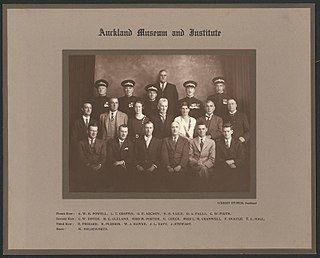
Arthur William Baden Powell was a New Zealand malacologist, naturalist and palaeontologist, a major influence in the study and classification of New Zealand molluscs through much of the 20th century. He was known to his friends and family by his third name, "Baden".
Raymond Robert Forster was a New Zealand arachnologist and museum director. He was a Fellow of the Entomological Society of New Zealand.
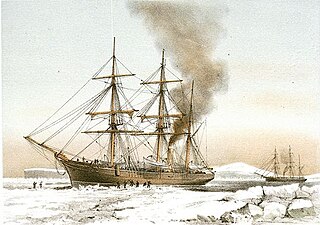
HMS Discovery was a wood-hulled screw expedition ship, and later storeship, formerly the sealing ship Bloodhound built in 1873 in Dundee. She was purchased in 1874 for the British Arctic Expedition of 1875–1876 and later served as a store ship. Discovery was sold in 1902, reverting to the name Bloodhound and her previous sealing trade. The ship was wrecked in Newfoundland in 1917.

RV Horizon, ex Auxiliary Fleet Tug ATA-180, was a Scripps Institution of Oceanography research vessel from 1949 through 1968. During that time she made 267 cruises and logging 610,522 miles (982,540 km) spending 4,207 days at sea.
Elizabeth Joan Batham was a New Zealand marine biologist and university lecturer. A past president of the New Zealand Marine Sciences Society and a Fellow of the Royal Society of New Zealand, Batham directed the Portobello Marine Biological Station at the University of Otago for more than 23 years.
RRS Discovery II was a British Royal Research Ship which, during her operational lifetime of about 30 years, carried out considerable hydrographical and marine biological survey work in Antarctic waters and the Southern Ocean in the course of the Discovery Investigations research program. Built in Port Glasgow, launched in 1928 and completed in 1929, she was the first purpose-built oceanographic research vessel and was named after Robert Falcon Scott's 1901 ship, RRS Discovery.

Pisinna rekohuana is a species of marine gastropod mollusc in the family Anabathridae. First described by Badwn Powell in 1933 as Estea rekohuana, it is endemic to the waters of New Zealand. There are two subspecies of the gastropod: Pisinna rekohuana rekohuana, primarily found in the south and Pisinna rekohuana lactorubra, primarily found on the north-east coast of the North Island.

The 1954 Chatham Islands expedition was a research expedition organised by George Knox of the University of Canterbury to explore the distribution of benthic and pelagic marine fauna living between the Chatham Islands / Rēkohu and the eastern coast of New Zealand.

The 1924 Chatham Islands expedition was a scientific expedition undertaken in early 1924 to research the biodiversity and indigenous people of the Chatham Islands.
John Cameron Yaldwyn was a New Zealand carcinologist who made significant contributions to the study of New Zealand crustacea and was the director of the National Museum of New Zealand, leading that institution from 1980 to 1989, prior to its reformation as Te Papa.

Plutonaster knoxi is a species of starfish in the family Astropectinidae. This species was first described by Howard Barraclough Fell in 1958.
References
- 1 2 "Launch Alert sailed on many scientific cruises". The Press. Vol. XCV, no. 28207. 18 February 1957. p. 13. Retrieved 21 May 2024.
- ↑ "Successful voyage Antipodes Expedition". Otago Daily Times. No. 27546. 14 November 1950. p. 6. Retrieved 21 May 2024.
- ↑ "Alert (Launch)". tiaki.natlib.govt.nz. 2024. Retrieved 21 May 2024.
- ↑ R. K. Dell (March 1976). "Post‐war developments in New Zealand oceanography: A personal view". New Zealand Journal of Marine and Freshwater Research. 10 (1): 1–14. doi:10.1080/00288330.1976.9515595. ISSN 0028-8330. Wikidata Q124734348.
- ↑ G A Knox (1957). "General account of the Chatham Islands 1954 Expedition" (PDF). New Zealand Oceanographic Institute Memoir. 2: 1–37. ISSN 0083-7903. Wikidata Q66412141.